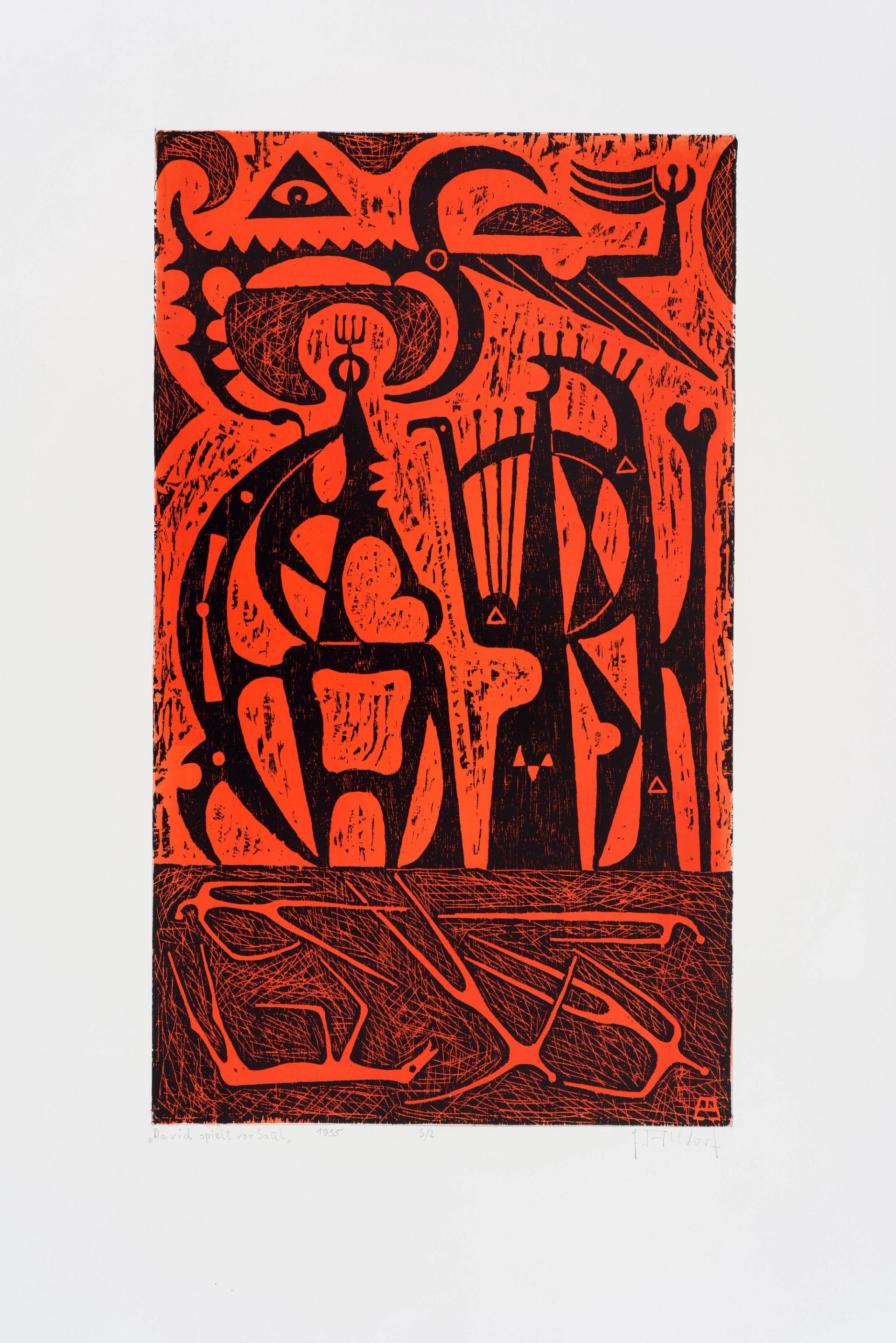During his lifetime, German artist Egon Altdorf kept a low profile.
“My father was very reluctant to sell his work,” says his son, Dorian Crone. “He never had a dealer – he hated the commercial art world.” As a result, Altdorf’s sculptures, paintings, woodcuts and etchings are almost unknown, both in Germany and abroad. But all that is about to change: the Henry Moore Institute in Leeds is opening an exhibition of his art tomorrow, which runs until November 26. Much of the art on show was salvaged by Crone in 2008 from Altdorf’s studio before being torn down after his death.
Altdorf’s enigmatic abstract symbolism, heavy lines and pronounced expressionist influence are characteristic of post-war German art. But he was also influenced by the British artists he met in 1953 – a journey he described as the most important event in his creative development.
He had won a prize in an international competition organized by the Institute for Contemporary Arts in London to design the Monument to the Unknown Political Prisoner and the work, which has not survived, was exhibited at the Tate. While in Britain he visited Henry Moore at his studio in Much Hadham and met Barbara Hepworth, Reg Butler, Lynn Chadwick and Geoffrey Clarke.

Egon Altdorf, David spielt vor Saul (David plays before Saul) (1955) Photo: © Douglas Atfield
Altdorf’s most significant surviving work is the design for the interior of a new synagogue built in Wiesbaden, Germany, in 1966. Although he was not himself a Jew, he was also selected in 1953 to build a stone monument commemorating the old synagogue which was destroyed on Kristallnacht in 1966. 1938.
“We are thrilled to be able to shine a light on this little-known artist and give his work the attention it deserves,” says Clare O’Dowd, Curator of Research at the Henry Moore Institute. “His multidisciplinary practice is an inspiring example of the interfaith cooperation and internationalism of the 1950s, and resonates strongly today.”
Growing up in Berlin, Altdorf was drafted into the army in 1941 and taken prisoner of war in Tunisia. He was interned in Texas, then took part in an intensive program to train administrators for the reconstruction of post-war Germany in Rhode Island. He chose to live in Wiesbaden upon his release, knowing that he had lost both his home and his parents in Berlin by this time, and studied sculpture in nearby Mainz with Emy Roeder.

Egon Altdorf, Idol (Idol) (1955) © Photo: Douglas Atfield
He met a young Scottish artist and model, Diana Wilson, in Munich and they married in 1954. But he couldn’t support his wife, who couldn’t work in Germany, so she took Dorian, two years, with her in England. . Crone didn’t meet his father until he was 18.
“There were two pieces of his art in the house that I looked at as a kid and wondered about him,” Crone says. He describes his father as “a lateral thinker and an offbeat character”.
When Altdorf died in 2008, a friend of his called Crone to tell him the studio was being demolished. “I rushed to the studio in Wiesbaden and saw rolls of paper there that looked like works of art, and I managed to save them,” says Crone.
For his son, learning about Altdorf’s work “has been a wonderful, cathartic way to get to know him,” he says. “I wanted to see if I could share his art with the wider world.”
